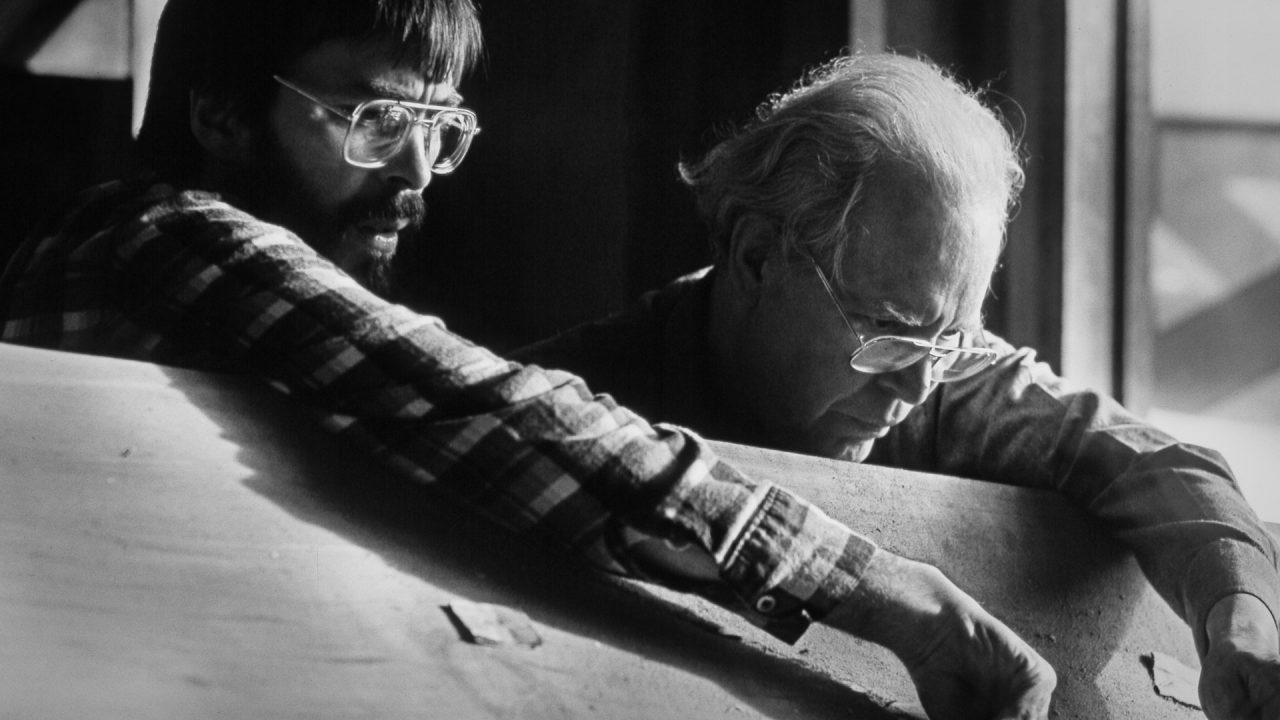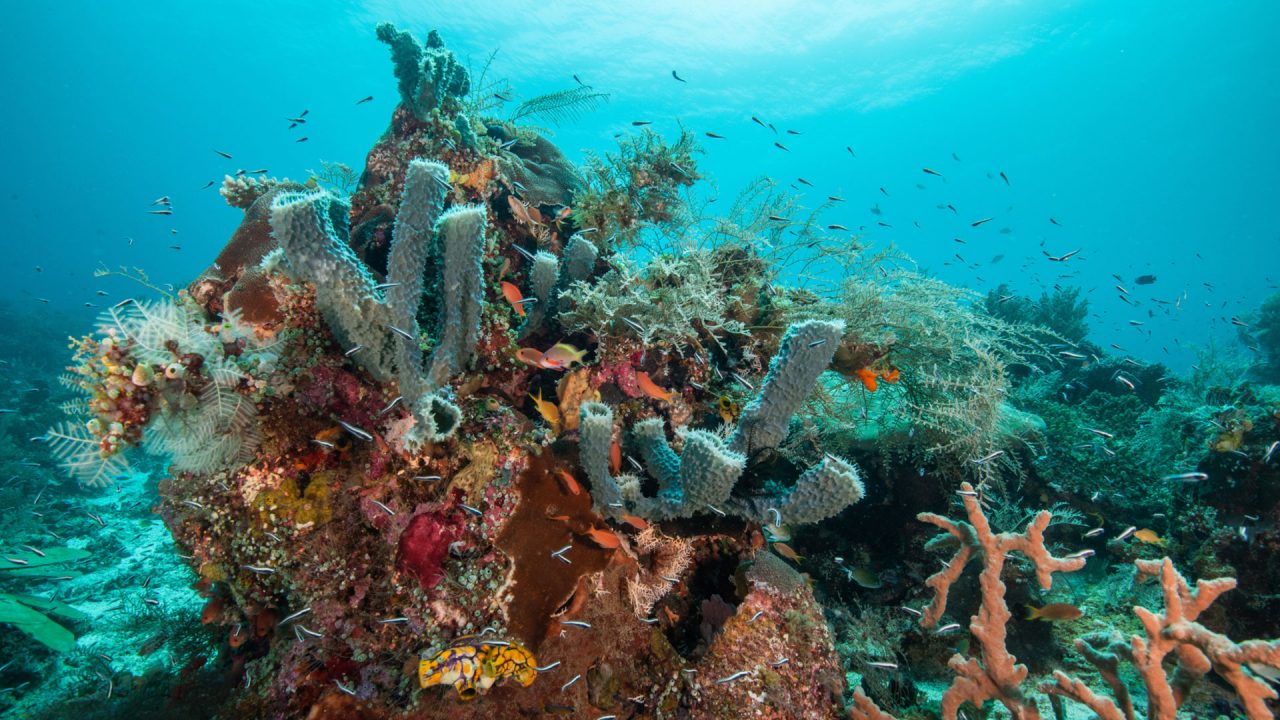
Mini-Lesson for Bill Reid Remembers
Mini-Lesson for Bill Reid Remembers
Mini-Lesson for Bill Reid Remembers
Schools Subjects:
- Indigenous Studies – Arts, History/Politics, Issues and Contemporary Challenges
- Science – Environmental Science
- Geography – Territory: Indigenous
- Art Education – Visual Arts
Recommended Ages: 12-14
Bill Reid Remembers, Alanis Obomsawin, provided by the National Film Board of Canada
Synopsis: Bill Reid Remembers is a beautiful tribute from Alanis Obomsawin to her friend’s remarkable life and rich legacy. Despite spending his early life away from his nation’s culture, renowned Haida artist Bill Reid always kept Haida Gwaii close to his heart. While working for CBC Radio, he started learning how to make jewelry, then later sculpture, using Haida techniques and images, a move that would forever change his life and the Canadian artistic landscape. Reid’s powerful narration in the film—interspersed with Obomsawin’s own—recounts his complex childhood, his emergence as an accomplished artist, and his profound connection to his homeland. Decades after his passing, Bill Reid remains an enduring force and one of Canada’s greatest artists.
Educational Synopsis: This mini-lesson examines Bill Reid’s personal connection to Haida land, culture and Peoples through the sharing of his life experience, knowledge and profound art practice. Students will gain a better understanding of the history of colonialism on Haida Gwaii (formerly known as the Queen Charlotte Islands) and the devastating impact of mining and logging on its natural surroundings, as well as the equally tragic consequences on the Haida Peoples. Reid recalls the strength and resilience of the Haida in protecting their land and all living things, including Haida Gwaii’s culture, beliefs and way of life, which ultimately led to a National Park co-managed by the Haida and the Canadian government.
Keywords: Indigenous Studies, Indigenous Leaders, Pacific Northwest Coast, Haida, Haida Gwaii, Visual Art, Identity, British Columbia
Overarching Question: Bill Reid’s artwork explores many traditional stories of the Haida Peoples and their interconnectedness with all living things. How do you think the Haida stories and mythologies led to the protection of Haida Gwaii?
Activity 1: Bill Reid’s Artistic Legacy
Pre-Activity: Open Discussion
Bill Reid and Jags Stacy Brown working on Loo Taas in Skidegate, 1984. Photographed by Robert Semeniuk.
Watch clip: 00:00–05:00 (Bill Reid’s upbringing)
Question: Reflecting on Bill Reid’s childhood, upbringing and family values: What was the impact of colonialism on Bill Reid’s identity? How did the reappropriation of his Haida culture impact his artistic legacy?
Summary
The goal of the pre-activity is to develop an understanding of how colonialism can strip a person’s identity and pride in one’s culture. Art can play an important part in reappropriating identity and rediscovering self and connection to community.
Activity: Research and Present
Bill Reid, Skaana—Killer Whale, Chief of the Undersea World. Bronze, completed 1984. 5.5 m high. Vancouver Public Aquarium, Stanley Park, Vancouver. Photographed by James Roberts, 2021.
Watch clip: 13:50–16:47 (Bill Reid’s major works)
Research one of Bill Reid’s works of art and answer the following questions.
- Describe the work’s visual qualities, such as the line work, colours and texture.
- Identify and analyze the images and symbols in the piece.
- What is the significance of these symbols in Haida culture?
- Is there a Haida story that is expressed in the piece?
- How does the artwork explore the relationship between human beings and the natural or supernatural world?
- Finally, research how the transmission of culture and knowledge is expressed in art and objects for Haida Peoples.
Individual students or small groups of students can create a visual presentation that teaches the meaning of the symbolism and the stories in Reid’s artwork to the class.
Summary
The objective of this activity is for students to become familiar with Bill Reid’s artwork and to deepen their understanding of Indigenous Northwest Coast art. Some of the visual elements and motifs in his work are similar to those of Northwest Coast artists from various Nations. Traditionally, Northwest Coast art and objects such as totem poles, bentwood boxes and masks were used in ceremonies like the Potlatch, and they are considered sacred. These objects were used to communicate and express stories that were important to the passing of knowledge, customs and culture. Many of Reid’s artworks explore the interconnectedness between the human and natural world.
Activity 2: Environmental Colonialism
Activity: Research and Group Discussion
Gwaii Haanas, no date. Photographed by Andrew S. Wright / cold-coast.com
Watch clip: 10:37–13:50 (natural wonders of Haida Gwaii)
After watching the clip, in small groups, briefly research where Haida Gwaii is and what it is renowned for.
Watch clip: 05:00–10:36 (colonization of Haida Gwaii and destruction of old-growth forests)
In small groups, discuss the following question based on what you observed in the film clip:
What are some examples of colonial practices that have affected the environment in Haida Gwaii? How has colonization impacted the Haida Peoples and the land?
After the discussion, fill in the following table:

After completing the chart, have a large class discussion on how you think the Haida People and their environment are interconnected.
Summary
The natural environment is essential to the survival of human beings. However, colonial practices and capitalist worldviews such as clearcutting old-growth forests seem to disregard this fact. Nurturing a healthy and sustainable relationship with Mother Earth will not only benefit the current generation, but it will ensure that future generations of plants, animals and other living beings are protected as well.
Activity 3: Land Protectors
Activity: Group Discussions
Bill Reid, Spirit of Haida Gwaii: The Jade Canoe, 1996. Plaster, bronze with patina. 389 x 605 x 348 cm. Vancouver Airport Authority. Photographed by Kenji Nagai.
Watch clip: 15:50 – 19:00
Separate the class in small groups and have students discuss the following questions:
- What is the difference between a protestor and a protector?
- What is the link between the symbolism in Bill Reid’s sculpture Spirit of Haida Gwaii (a.k.a., The Black Canoe; The Jade Canoe) and his efforts to protect the environment of South Moresby?
- How did Bill Reid’s artistic legacy play a role in his work to protect the environment?
Discuss questions in a group sharing circle.
Summary
As presented in the film, many Indigenous Peoples view the protection of the environment as a major responsibility. Hopefully, this activity will encourage students to take an interest in the importance of protecting the environment and to examine the contribution of land protectors. Students should also acquire a better understanding of Indigenous worldviews (as expressed in Bill Reid’s art) as they pertain to our responsibilities and relationships with all living things, in addition to seeing that Indigenous peoples are fully capable of managing their own lands in a sustainable and successful way.
Take Action:
There are many instances where Indigenous land protectors have convinced governments and corporations to stop resource development because it destroyed important habitats or places that are sacred to Indigenous Peoples. Research a historical example where Indigenous protectors successfully and peacefully regained rights on their land and protected it against development. Create a visual presentation (documentary or short film) that educates classmates about these historical and environmental events.
Using the films created in class, organize a film festival and share the films with the school community to promote reconciliation and sustainable economic development, and to encourage change in your school community.
Suggested Extension Activity
Have students research a contemporary Haida artist such as, but not limited to, Luke Parnell, Michael Nicoll Yahgulanaas or Christopher Auchter. How do these contemporary artists utilize the traditional Haida form while bringing their own unique voice to their art? As more and more contemporary Indigenous artists bring new and diverse visual representations of their culture to audiences nationally and internationally, we see that many diverse perspectives can originate from one Nation. Why do you think this can be valuable to a community?
The Mountain of SGaana, Christopher Auchter, provided by the National Film Board of Canada
This mini-lesson was written in collaboration with project consultant Joël Tétrault.
A francophone Métis from Manitoba, Joël Tétrault currently teaches Indigenous perspectives in the Louis Riel School Division in Winnipeg. A passionate educator, he has worked in education for 18 years, teaching mainly Canadian history, Indigenous perspectives, law and francophone cinema. For Joël, teaching means empowering students and encouraging them to take action to build a society that’s more just and equitable for all.
Pour lire cet article en français, cliquez ici.
Discover more Mini-Lessons | Watch educational films on NFB Education | Watch educational playlists on NFB Education | Follow NFB Education on Facebook | Follow NFB Education on Pinterest | Subscribe to the NFB Education Newsletter



